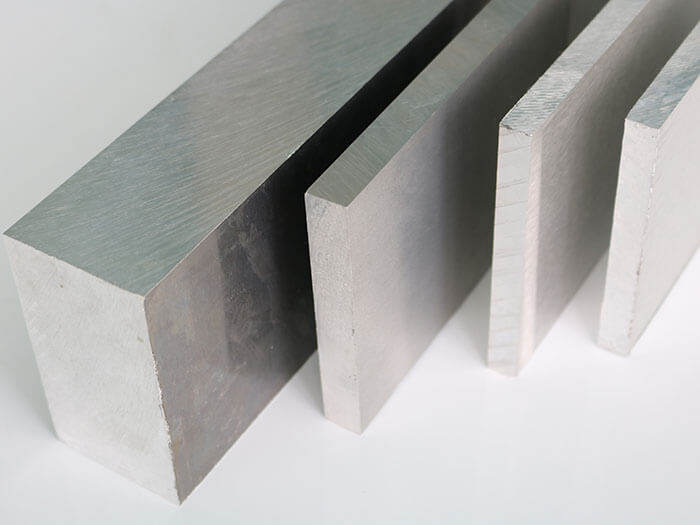Aluminum alloys are one of the most versatile materials, used in everything from aerospace engineering to kitchen appliances. Their popularity is not unfounded; these alloys offer a remarkable balance of strength, weight, and corrosion resistance that few materials can match. However, one interesting aspect often confuses newbies: there are subtle differences in density between various aluminum alloy grades(Density table of aluminum alloys), and this blog explores the factors that contribute to these density differences.

Aluminum alloys are materials composed of aluminum (Al) and various alloying elements (such as copper, magnesium, silicon, zinc, etc.) that enhance their mechanical properties and usability for different applications. According to the main alloy elements, it can be divided into 8 series , each series contains some alloy grades.
Below is a table that succinctly introduces the main aluminum alloy series and some representative grades within each series, highlighting their primary characteristics and typical applications.
| Series | Alloy Grades | Primary Alloying Element | Characteristics | Typical Applications |
| 1xxx | 1050, 1060, 1100 | Pure Aluminum (>99%) | High corrosion resistance, excellent conductivity, low strength | Food industry, chemical equipment, reflectors |
| 2xxx | 2024, 2A12, 2219 | Copper | High strength, limited corrosion resistance, heat treatable | Aerospace structures, rivets, truck wheels |
| 3xxx | 3003, 3004, 3105 | Manganese | Medium strength, good workability, high corrosion resistance | Building materials, beverage cans, automotive |
| 4xxx | 4032, 4043 | Silicon | Low melting point, good fluidity | Welding filler, brazing alloys |
| 5xxx | 5052, 5083, 5754 | Magnesium | High strength, excellent corrosion resistance, weldable | Marine applications, automotive, architecture |
| 6xxx | 6061, 6063, 6082 | Magnesium and Silicon | Good strength, high corrosion resistance, highly weldable | Structural applications, automotive, railways |
| 7xxx | 7075, 7050, 7A04 | Zinc | Very high strength, lower corrosion resistance, heat treatable | Aerospace, military, high-performance parts |
| 8xxx | 8011 | Other elements | Varies with specific alloy (e.g., iron, lithium) | Foil, conductors, and other specific uses |
The density of aluminum alloys is mainly determined by its composition. The density of pure aluminum is approximately 2.7 g/cm3 or 0.098 lb/in3 , but adding alloying elements can change this value. For example, adding copper (which is denser than aluminum) to create alloys like 2024 or 7075 can increase the density of the resulting material. Conversely, silicon is less dense and when used in alloys such as 4043 or 4032, reduces the overall density.
| Alloying Element | Density (g/cm³) | Effect on Aluminum Alloy Density |
| Aluminum (Al) | 2.70 | Baseline |
| Copper (Cu) | 8.96 | Increases density |
| Silicon (Si) | 2.33 | Decreases density |
| Magnesium (Mg) | 1.74 | Decreases density |
| Zinc (Zn) | 7.14 | Increases density |
| Manganese (Mn) | 7.43 | Increases density |
Below is a typical chart of densities for some common aluminum alloys, To learn more about the specific density of aluminum alloys, please visit Density of 1000-8000 Series Aluminum Alloy These values are approximate and can vary based on the specific composition and processing of the alloy.
| Alloy Series | Typical Grades | Density (g/cm³) | Density (lb/in³) |
| 1000 Series | 1050 | 2.71 | 0.0979 |
| 2000 Series | 2024 | 2.78 | 0.1004 |
| 3000 Series | 3003 | 2.73 | 0.0986 |
| 4000 Series | 4043 | 2.70 | 0.0975 |
| 5000 Series | 5052 | 2.68 | 0.0968 |
| 5000 Series | 5083 | 2.66 | 0.0961 |
| 6000 Series | 6061 | 2.70 | 0.0975 |
| 7000 Series | 7075 | 2.81 | 0.1015 |
| 8000 Series | 8011 | 2.71 | 0.0979 |
From the above table, we can easily see that:
In addition to alloying elements, the density of aluminum alloys is also affected by other factors:
The density of aluminum alloys is not a fixed property but varies depending on the alloying elements, manufacturing process and impurity content. In design and engineering applications where weight plays a critical role, these changes must be considered. By understanding the factors that affect density, engineers can select the appropriate aluminum alloy to meet its structural and weight requirements.
Copyright © Huasheng Aluminum 2023. All rights reserved.